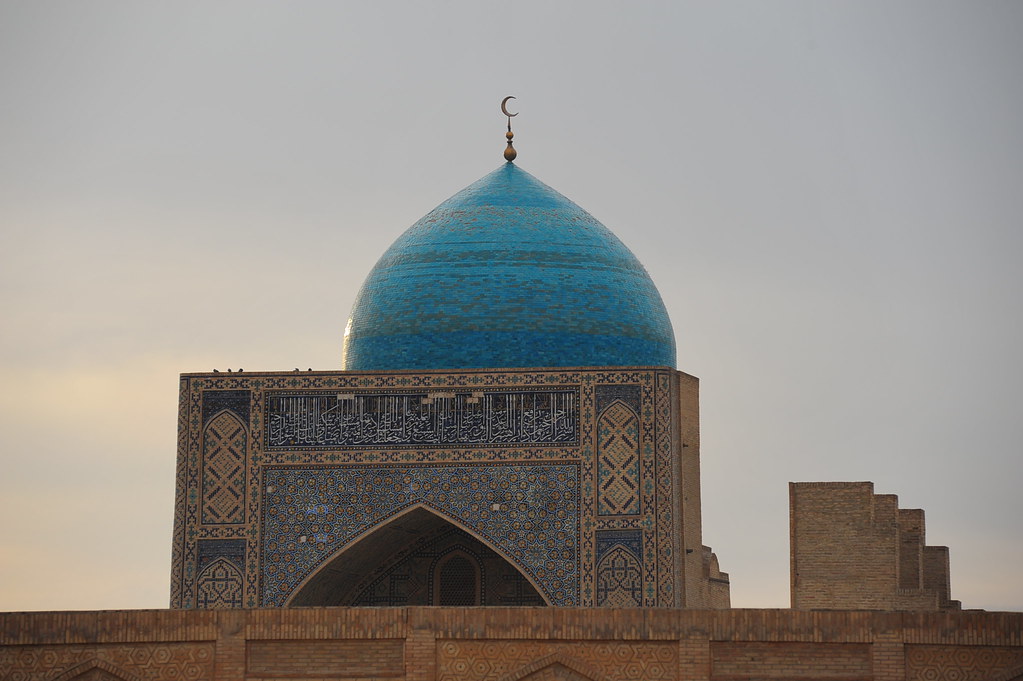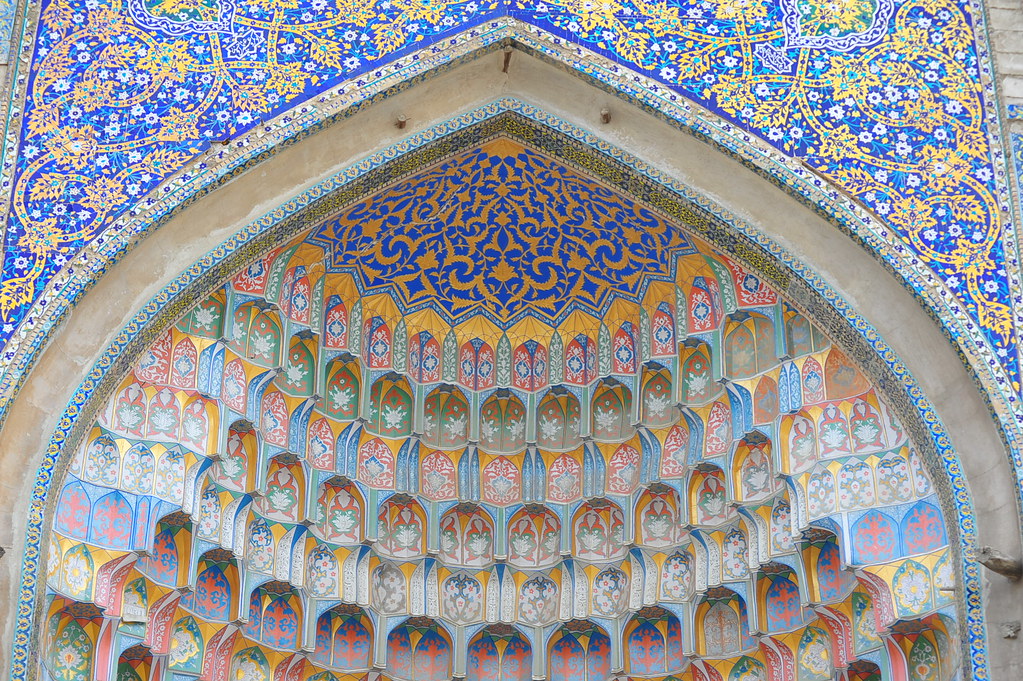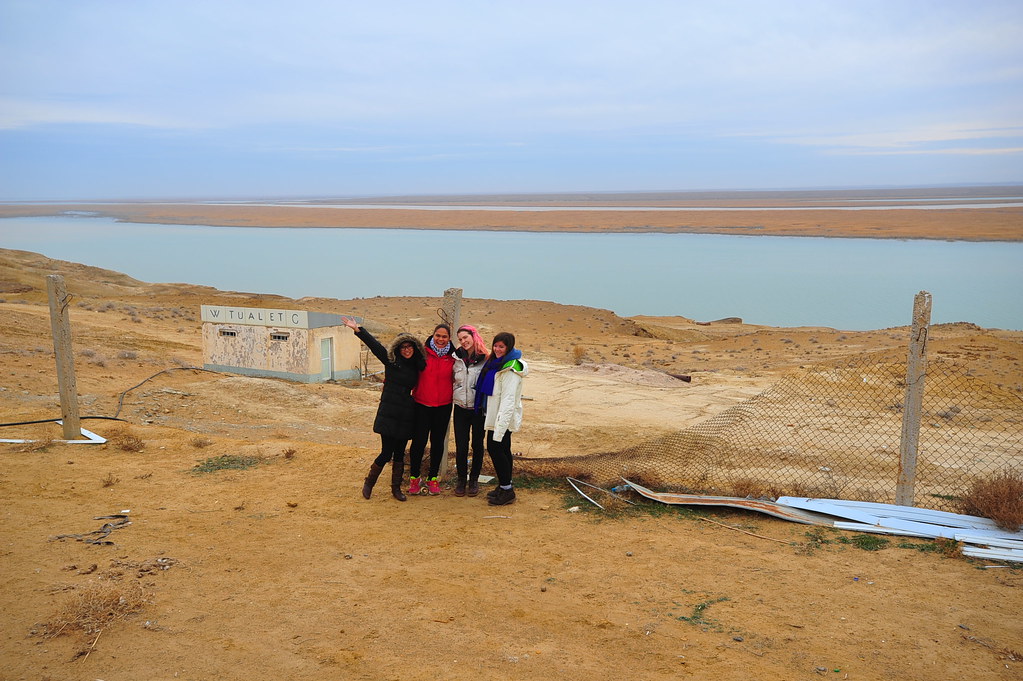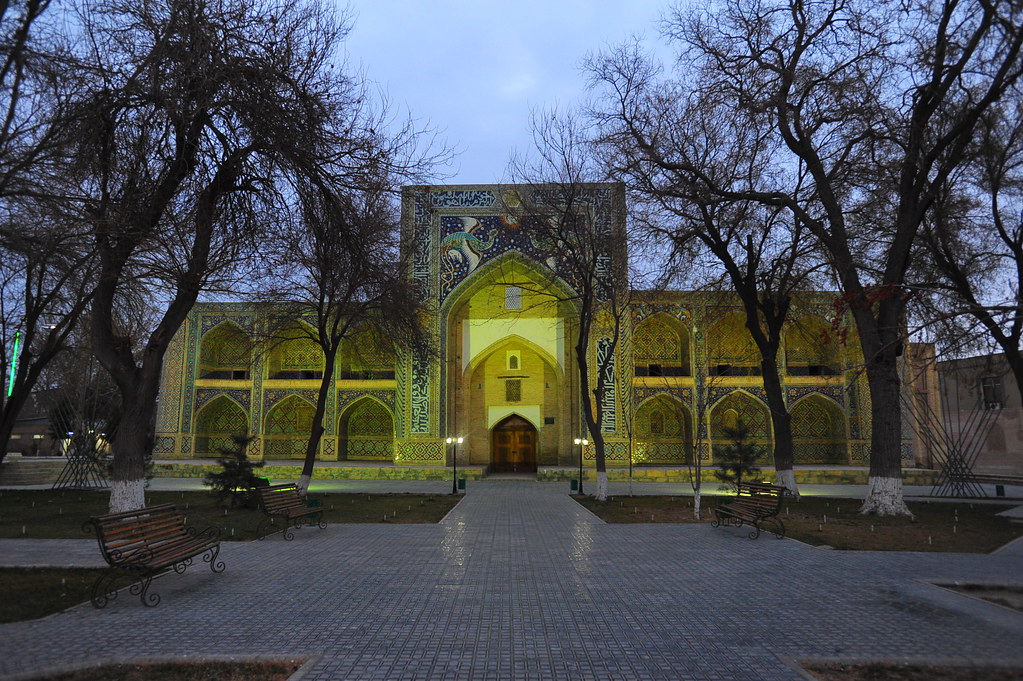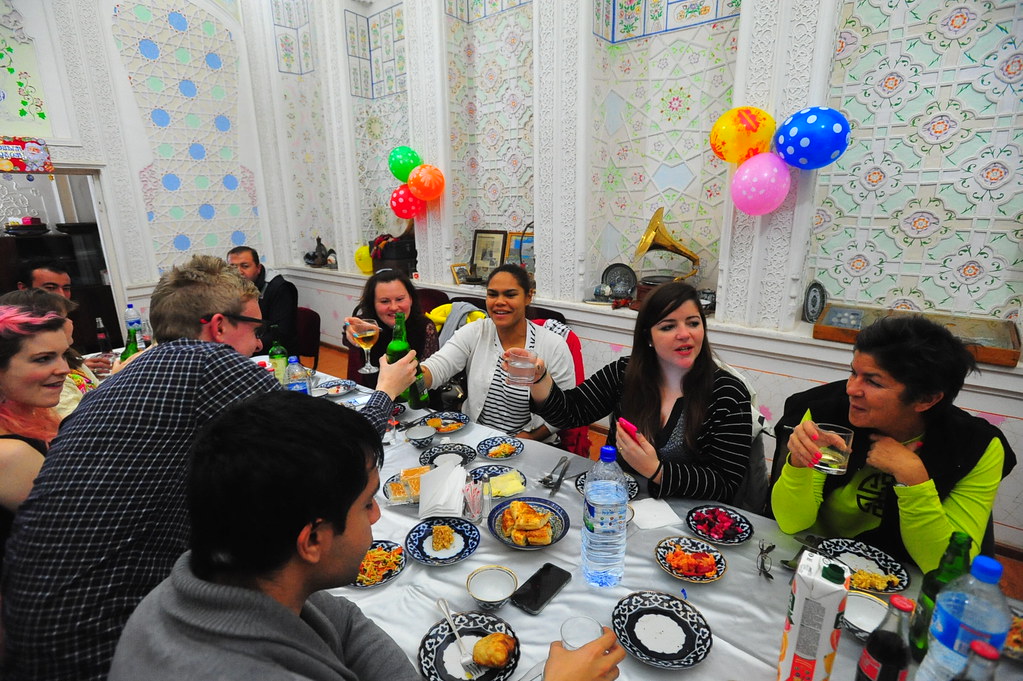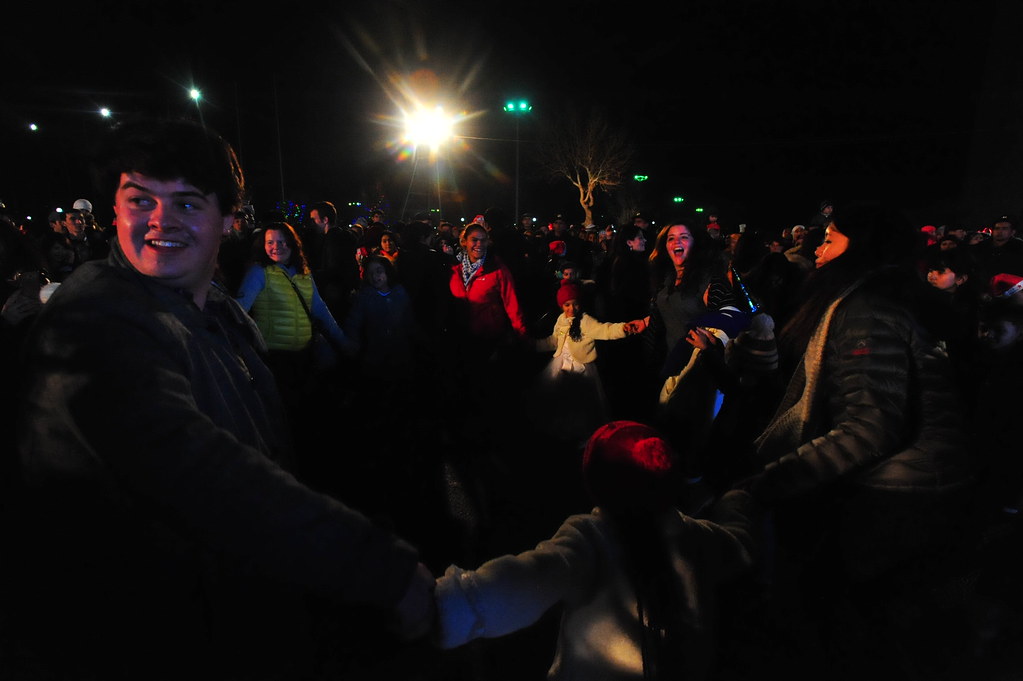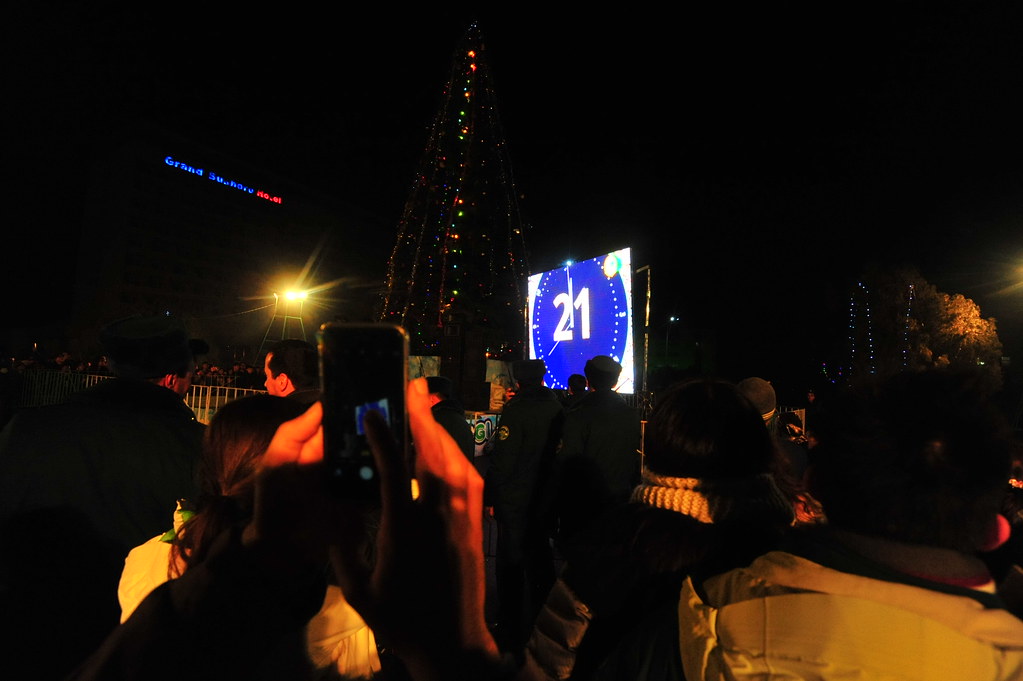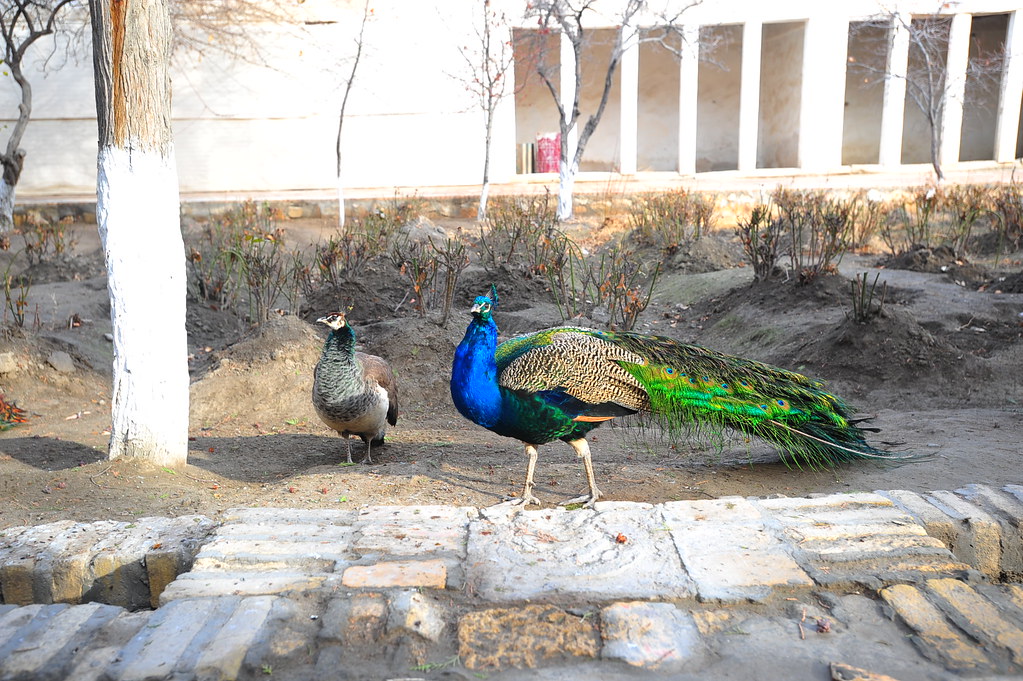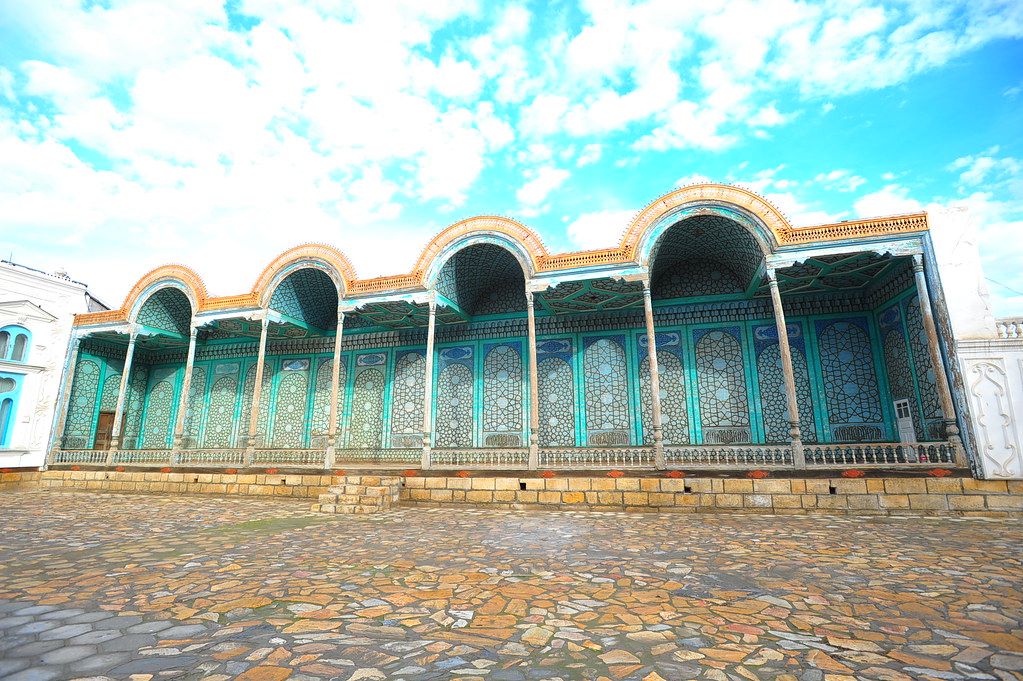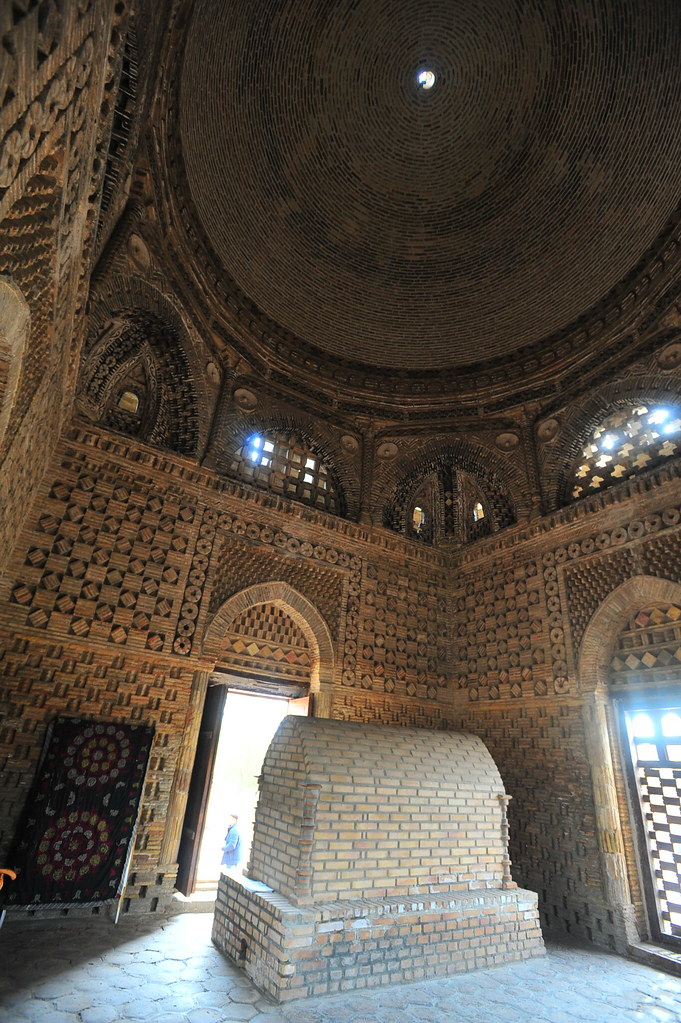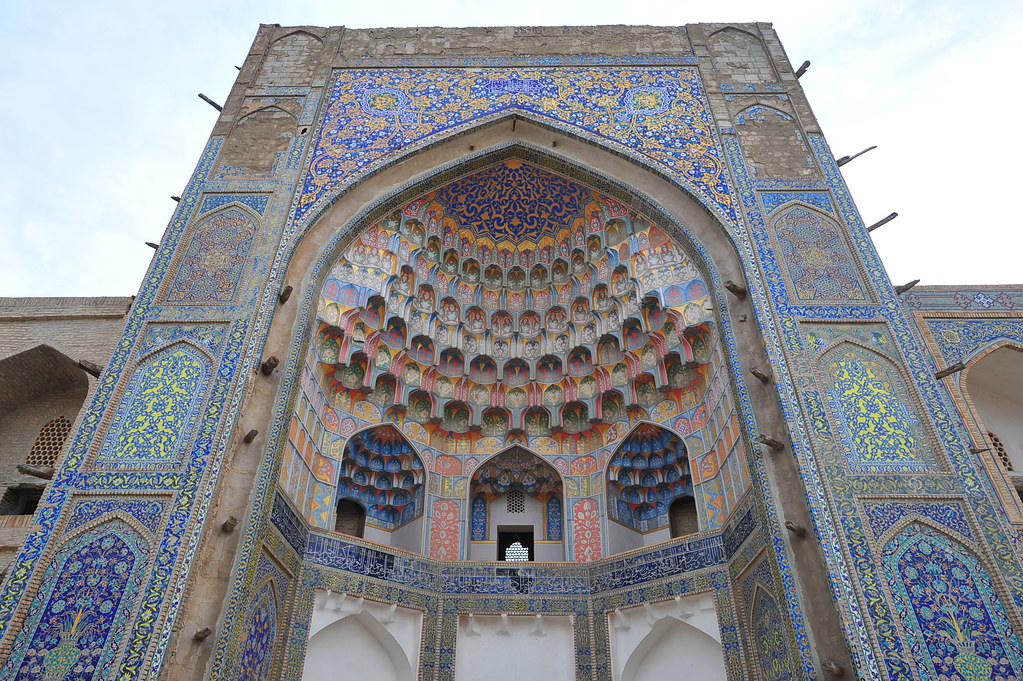The next morning, the group boarded our 9 hour bus ride from 8am-5pm (with an hour lunch break in between at a rest stop) from Khiva to Bukhara.
The drive isn’t as pretty as I would expect, as it’s endless barren fields of the Kyzylkum Desert.
When we arrived into Bukhara, we were dropped off at Lyabi-Hauz, the peaceful public plaza built around a pool in 1620 and shaded by old mulberry trees.
It’s a central meeting point for the city and great place to kick back with some tea/coffee/shisha and people-watch; it still maintains an otherworldly charm that still channels the spirit of the time when it was originally built.
On the east side stands the Nadir Divanbegi Medressa of 1622, and facing it on the west side is the Nadir Diavnbegi Khanaka, a sufi cloister used for ceremonies and academics.
After freshening up at Porso Hotel 1 min away from Laubi-Hauz, we headed out for our New Year’s Eve dinner nearby:
Afterwards we headed to the main public square by the Christmas Tree where an outdoor public performance was being held by Uzbek pop and cover singers.
In true monsoon style, two-time monsooner Tan decided to start the party…
Then a curious crowd started to gather around us…
And then it was a free for all…
Your humble author couldn’t just stand by and watch either…
Then, 30 minutes before New Year’s, the music abruptly stopped and the police pushed us, and the rest of the dancing crowd, back to watch the jumbo-trons. There, 2 journalists came onscreen and read out in both Russian and Uzbek a horrendously tedious year-in-review speech written by the Uzbek president until the 1 minute countdown.
What an anti-climax.
But we had some champagne and a few pepsi cups on us, so we celebrated our way regardless:
After our toast, we headed back to the Porso Hotel lobby to continue our celebrations with more music and countless shots.
There was a somewhat awkward but entertaining moment where we paused to listen to the year-in-review speech given by Vladimir Putin to Russia (and I guess the rest of the former Soviet territories that included Uzbekistan) that ended up being equally tedious.
I guess this year-in-review thing is an old Soviet/communist tradition…
The next morning the group got up late and headed out around 10am to check out the former emir’s Summer Palace. Although it was closed for New Year’s, the palace museum director let us in for a free peek nonetheless.
We then drove over to Bolo-Hauz mosque, the former emir’s official place of worship.
Afterwards we walked across the street to The Ark, the emir’s main residence and a fortressed town within that was bombed out by the Soviets in 1920.
The bombed out ruins remain, although a few structures have been redone as museums.
The courtyard within the Ark has been decently restored:
Outside the Ark walls can be a climber’s dream:
Unlike last night’s escapades at an abandoned fairgrounds in Khiva, we walked over through a thoroughly functioning one here in Bukhara in order to visit the Ismail Samani Mausoleum, a 10th century monument to an exalted former leader of Bukhara.
It is Bukhara’s oldest Muslim monument and is known to change colors throughout the day depending on the angle of sunlight, thus earning the nickname “Bukhara’s most colorful building”.
Today Ismail Samani and his monument still commands the people’s faith.
Due to the monument’s unconventional architectural flourishes that don’t recall Central Asian styles, the existing but unconfirmed theory is that it was actually designed by someone brought over from India.
Legend has it that if you walk around it 3 times, your wish may still be granted!
Afterwards we went out into the amusement park and got on some pretty old school rides:
After the playgrounds, we stopped by for lunch at a shop that also specialized in carpet-weaving:
And then it was our walking tour through the old city from Lyabi-Hauz, including scattered old mosques and medressas that still give Bukhara the distinction of being one of the 3 main ancient cities of the Silk Road.
The one closest to Lyabi-Hauz is the Maghoki-Attar, Central Asia’s oldest surviving mosque.
Beside it lies an overview of the 12th-century level of Bukhara, the remains of the 5th century Zoastrian temple destroyed by Arabs, and an earlier Buddhist temple.
Part of the mosque — according to legend — was buried by locals in the sand to protect it from the invading Mongols and Genghis Khan and indeed only the top of the mosque was visible when it was uncovered in the 1930s.
Head west from here through a few covered bazaars that sell old Soviet memorabilia, jewelry, caps, and black market money exchange.
Eventually you’ll come upon the unrestored Abdul Aziz Khan Medressa and facing it, the Ulugbek Medressa.
The Ulubek Medressa is Central Asia’s oldest medressa and was built by Ulugbek, the same architect responsible for the complexes at Gijduvan and the famous Registan at Samarkand (which we’ll see next in 1-2 days!).
Head more west and you’ll hit the resplendent 47m tall Kalon Minaret, flanked both by the Mir-i-Arab Medressa (distinctive for its forgeous blue domes) and the grand Kalon Mosque that can house up to 10,000 worshippers.
This complex reportedly left Genghis Khan so impressed and dumbfounded that he ensured these buildings to be spared when he invaded.
After watching the sun set on the Kalon complex, we wrapped up our walking tour and bid Yvonne, our first departed, adieu.
However, Yvonne would arrive at the airport an hour later to find out her evening Uzbekistan Airlines flight returning to Tashkent (so she could catch an 11am flight from there to India for a business conference) was inexplicably cancelled. Uh-oh.
When she returned to us with the bad news, our local guides banded together to arrange her two Plan B options: either an overnight 9-hour 7:45pm sleeper train to Tashkent that would arrive at 5am the next morning (for $27 USD), or a private driver to drive her direct to Tashkent (for ~$125 USD).
She decided for the train and we had our local Uzbek guide Beck accompany her in getting tickets at the train station, up to the point in seeing her off in boarding the train. There another one of our local guides will see her safe passage throughout until her arrival in Tashkent, where we arranged for our private driver to pick her up at 5am and take her to the airport so she could make her 11am flight to India.
Another travel story in the books!
![]()
- At time of posting in Bukhara, Uzbekistan, it was 11 °C - Humidity: 76% | Wind Speed: 3km/hr | Cloud Cover: cloudy and showers



